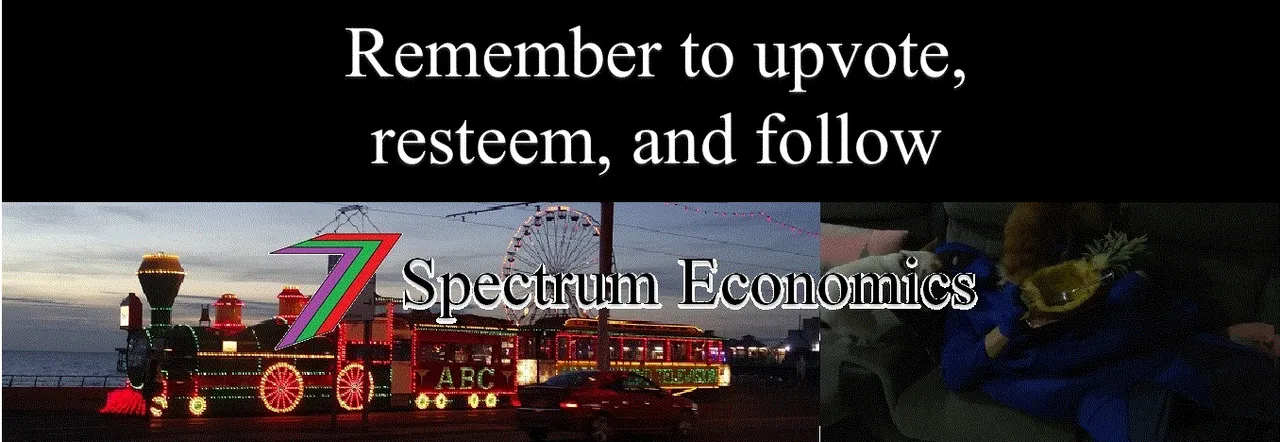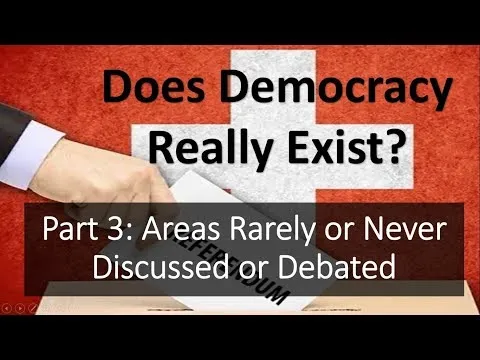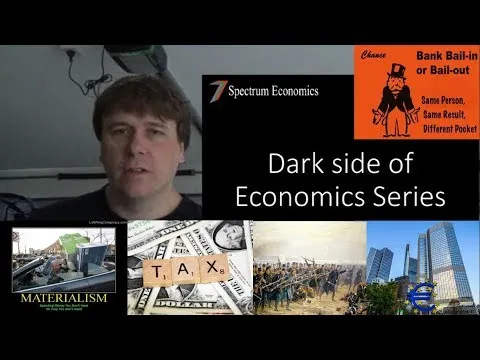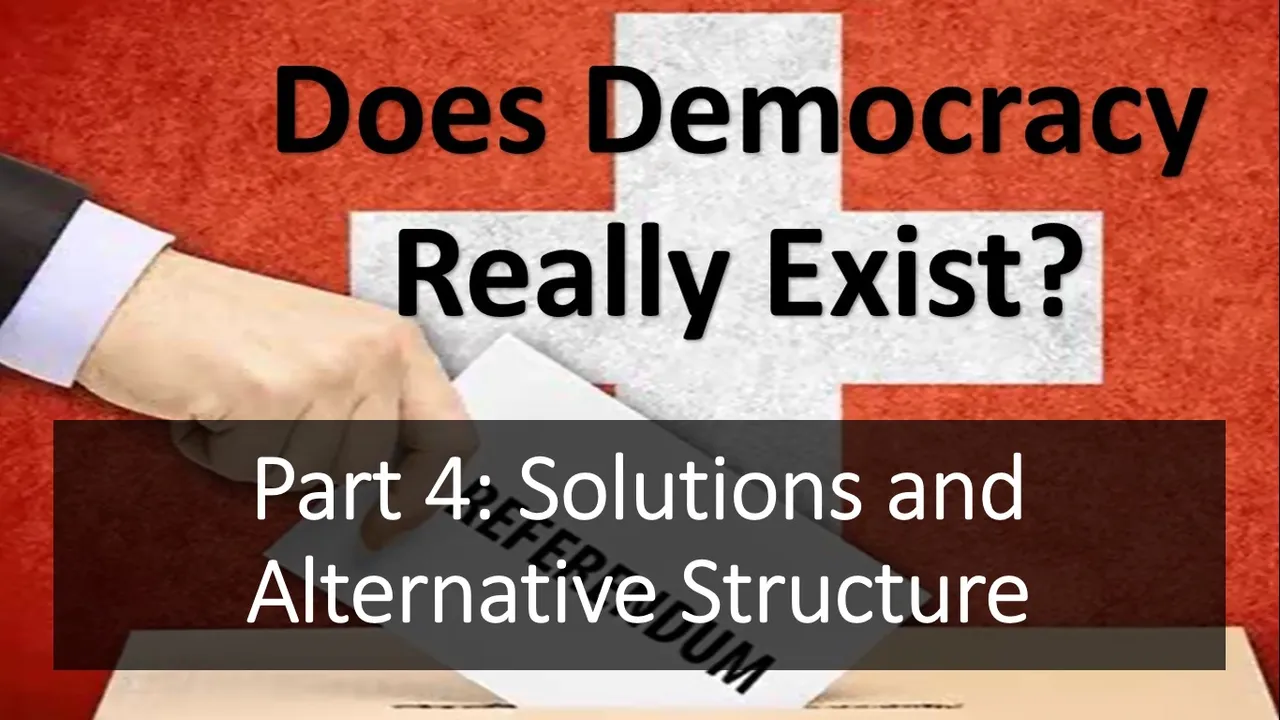
This post contains the fourth and final video in a four part series covering the relationship between economics and democracy. This video continues from the third video by wrapping up the areas that are not or rarely debated by the major political parties.
The video concludes by reaffirming that the existing democracy that we believe we live in is fake. Even if we lived in a democracy like the ancient Greeks intended, it is very unlikely to operate successfully. The video wraps up by discussing some alternative systems that we should consider to replace the existing one.
Here is a quick recap of the areas identified in the second and third videos in the series:
- Health
- Education
- Immigration
- Infrastructure
- Foreign Policy
- Social Problems
- Political Structural Problems
- Environmental
- Economics
The reason why these areas are investigated is to demonstrate the lack of democracy present within our current system. A democratic system would bring the key issues to the forefront, debate them, inform the public and ultimately let the public decide what course of action should be taken. Instead, the key issues are ignored. Mostly irrelevant issues are hyped. The people are left ignorant to what is really happening and the power of the few remains unchallenged.
The fourth video delves into political structural problems, environmental, and economics.
Political Structural Problems
Starting with political structural problems; this discussion around political structural problems is very much focused on Australian issues but is still reasonably applicable to many other countries, below are the areas discussed.
- Two party system
- Do not get to vote for Prime Minister or cabinet
- Removal of Governor-General (Commonwealth)
- Political correctness vs. freedom of speech
- Surveillance on own people
- Where are the referendums?
The key themes linking the above issues are lack of freedom and choice. The two party system is prevalent in most western societies.
In Australia, the two parties are the Liberal National Party and the Australian Labor Party. There are several other far smaller parties such as the Greens and One Nation but they never come close to winning an election. One of the two parties holds office while the other becomes opposition. This way the power never leaves the two parties. As mentioned in previous posts, the two parties are very similar, they might as well be two branches of the same party.
Another interesting element of the Australian system is that there is a Governor-General who represents the Queen. If the Prime Minister steps out of line (upsets the crown), the Prime Minister can be dismissed. This happened with Gough Whitlam back in 1975. Therefore, the Queen has power over the Australian system. The Prime Minister can also be oust by his own party with a vote of no confidence, which can happen literally overnight without any consent from the people. This happened to three Australian Prime Ministers in the last 10 years.
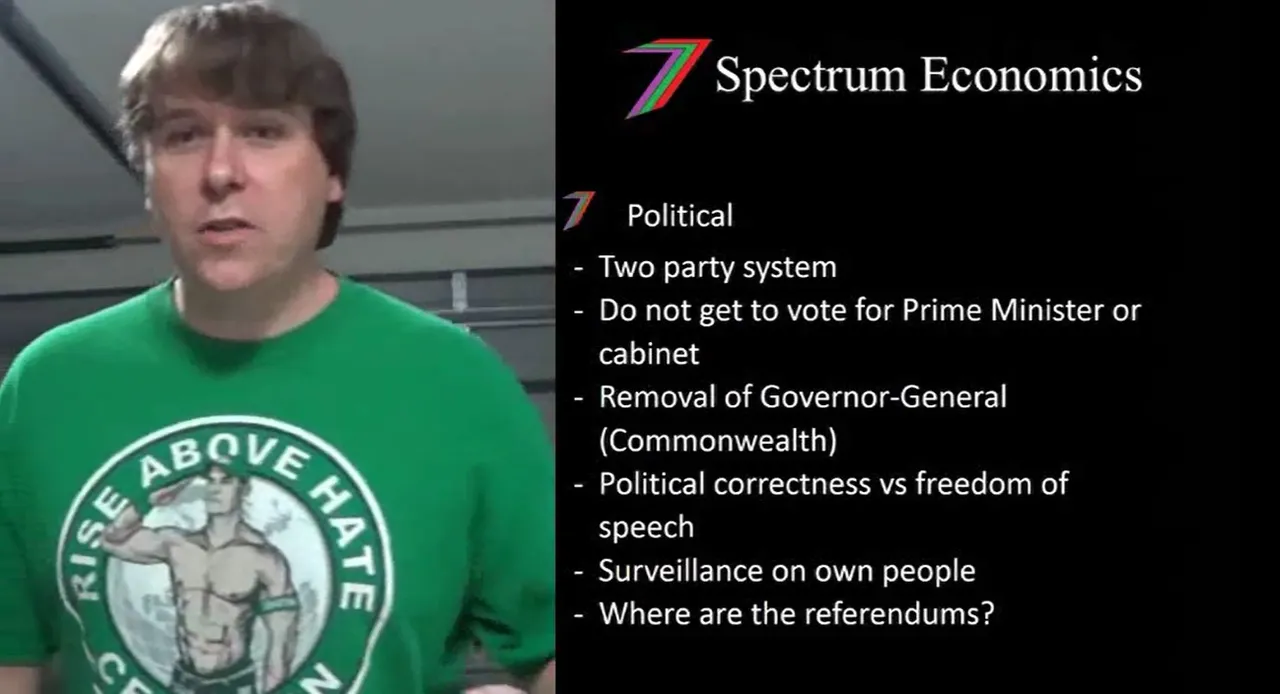
Environment
After looking at the political system, the video moves on to discuss the environment. This section should be applicable to almost every country. The key issues discussed in the video are as follows:
- Industry pollution
- Meat industry pollution (air, water, land, food)
- Air pollution
- Water pollution
- Depletion of Ozone layer and radiation
- Fracking
- Anti-climate change debate
- Alternative energies debate
As a vegan, I care quite deeply about the environment and the wonderful animals that live in it. The environment gets a quite a bit of attention from the media and the politicians. Unfortunately, it is not around the important issues. It is almost entirely focused around climate change a.k.a. global warming and carbon emissions. There is no doubt that climate change exists. It has always existed, the climate is constantly changing. Where the doubts comes in is regarding the human contribution to climate change and the effect carbon dioxide has on temperature change. Research suggests that water vapour not caused by human activity is the largest contributor to rising temperatures. Carbon dioxide produced by human activity contributes to a very small percentage (less than 1%) of greenhouse gases (Bickmore, 2010).
The environmental issues that should receive more attention are issues such as air and water pollution in cities, the water and air pollution caused by the meat industry and the depletion of the ozone layer which has resulted in significantly higher radiation. Just look at the sun damage to trees and how quickly you get sunburnt. This is very obvious living in Australia.
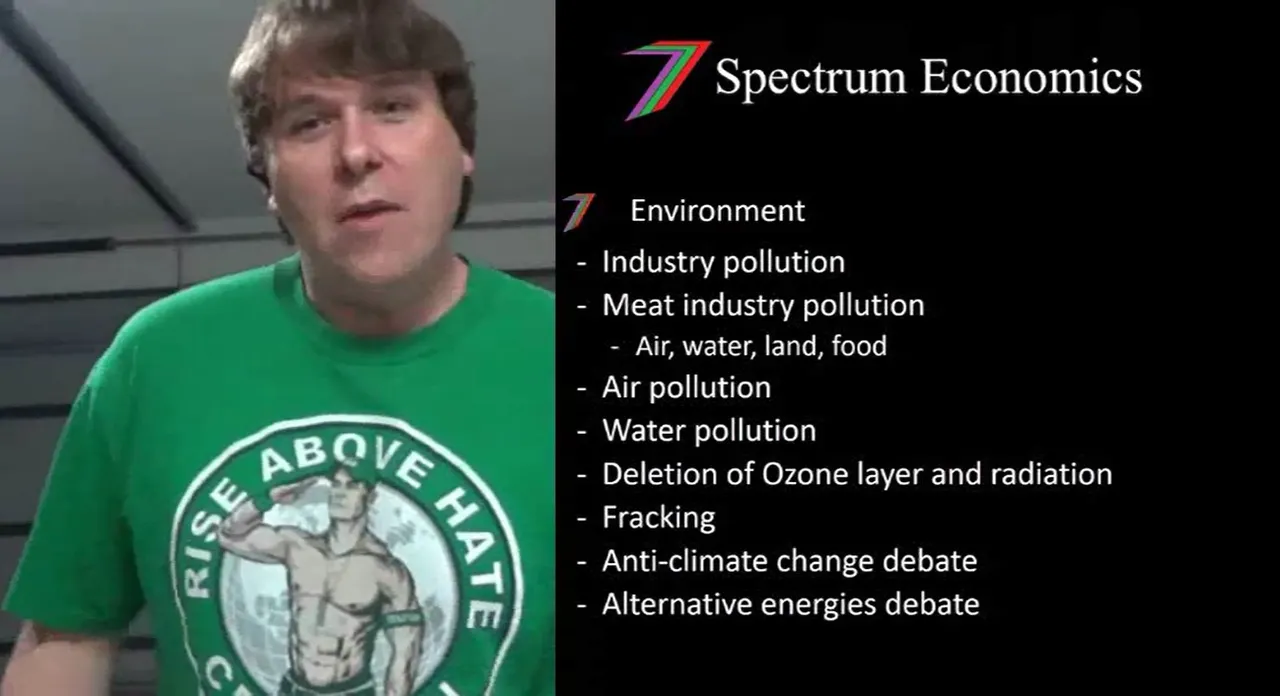
Economy
The video rounds up the list with the economy. This segment looks at various aspects of the economy and the treatment and application of economics in general. The list of key issues identified are described below.
- Widening income disparity
- Employment vs. working hours
- Rising household debt
- Consumerism and materiality
- High house prices and high payments on mortgages
- Taxation laws
- Manufacturing
- Competitive production (E.g. use of hemp in clothes)
- Over focus on GDP, unemployment, and participation rate. What about happiness?
- Central Bank (Private vs. Government)
o Manipulation of money supply (Fiat Money)
o Manipulation of currencies
As you can see there are a long list of economic issues that are not or rarely discussed by the political parties. The two areas I am most concerned about are the number of hours households need to work in order to make ends meet and the Central Banks control over the money supply.
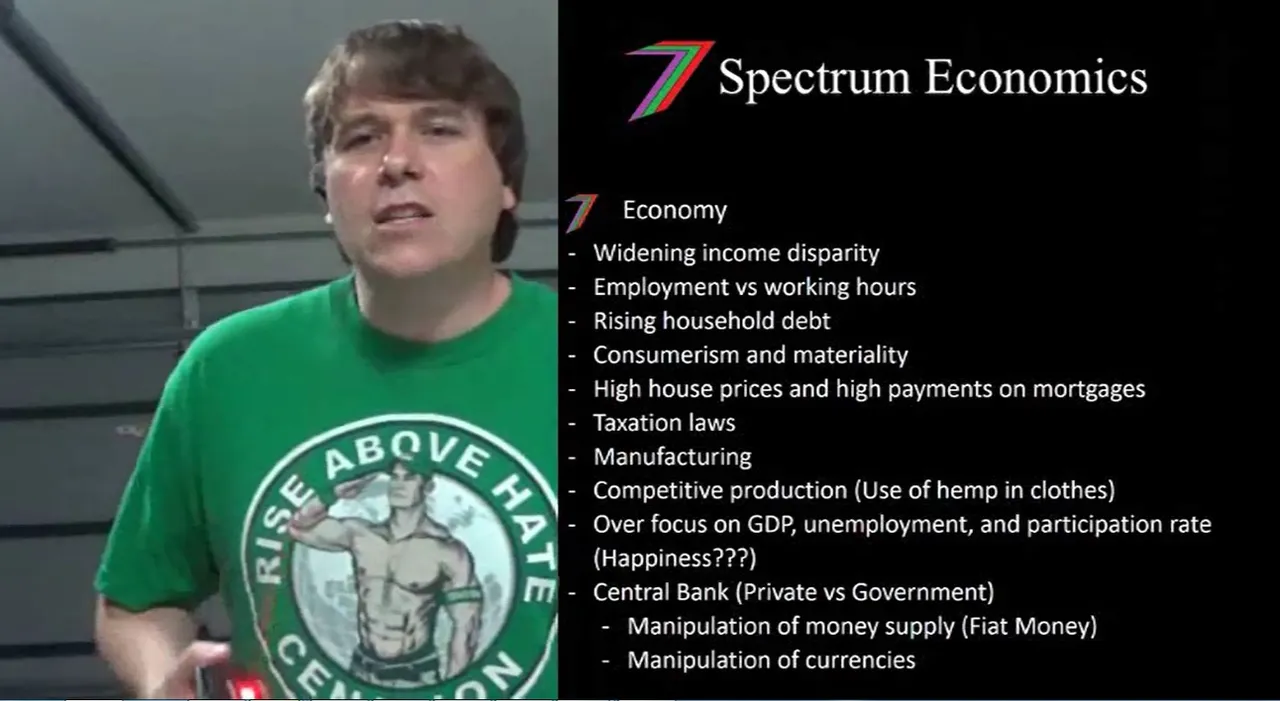
Employment vs. working hours
Technology has improved at a staggering rate. Extracting resources can be done in a fraction of the time. Machines can do the work of hundreds of factory floor workers in very small amount of time. Computers and the internet can be used to conduct research with a few clicks of the button instead of hours wasted going to different libraries and rummaging through hundreds of books. With such amazing improvements in efficiency, why are households not working significantly less hours? In fact, many households require multiple income earners to make ends meet. This does not make sense, unless of course someone else is reaping the benefits of such improvements in efficiency.
The reality is, someone else is reaping the benefits. These people are the owners of the factors of production (in most case large multi-national companies). This has resulted in the widening of income disparity between the middle class and the super-rich. At the same time the masses are also being brainwashed into spending money on things that they cannot afford and what does not provide them with long lasting fulfilment. Overspending has resulted in increased household debt, which forces families to try and earn as much money as possible. This income is required in order to pay the interest on debts as well as pay for more things that offer little long-term satisfaction.
The diagram below briefly shows the relation between an exploited labour force, debt, consumerism and widening income inequality.
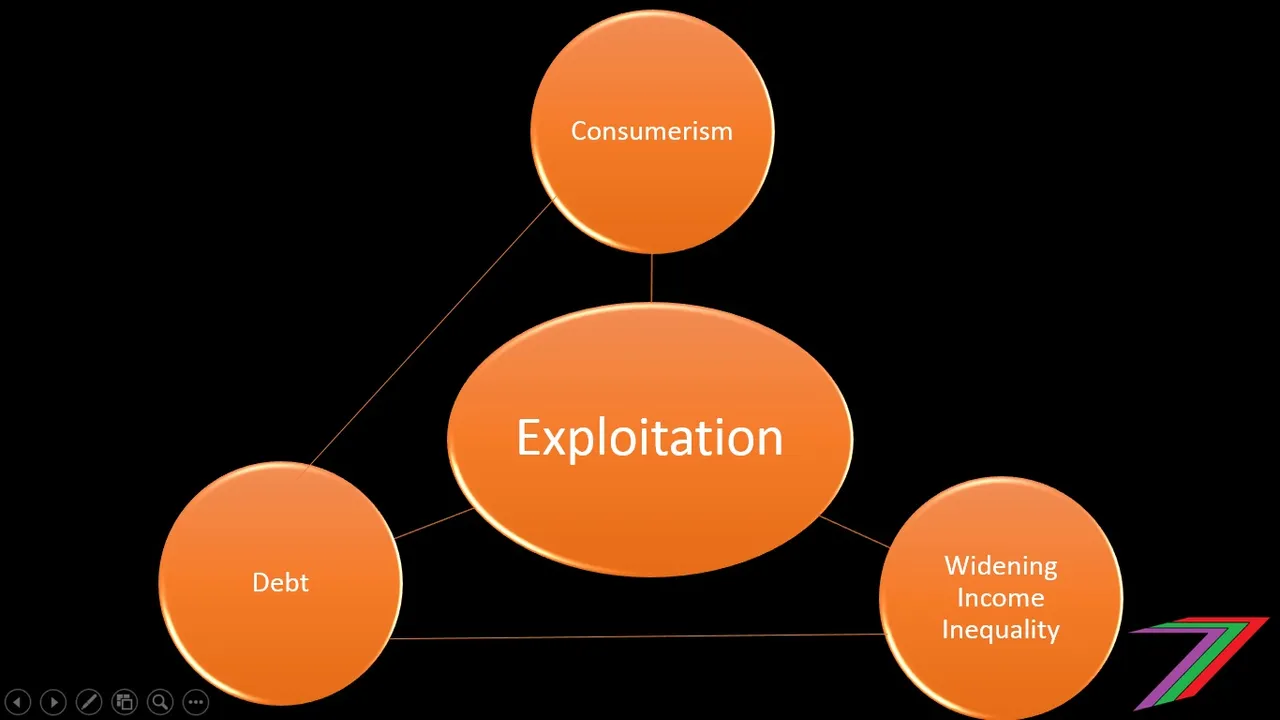
Central Banks manipulating the money supply
The Central Banks hold a massive amount of power. They control the money supply. They can print as much money as they like. The more money they print, the less valuable your money is. In other words, the more money they print, the more money you will need to pay in order to buy what you need or want (inflation).
Central Banks can create this money out of thin air. They do not have to acquire gold or silver or any other asset to back the paper money they issue. They loan this money created out of thin air to banks and then charge them interest on this money. This means that there is more money owed to the Central Banks than actually exists. This creates a situation of perennial debt. The banks make sure that this debt gets passed on to the masses through loans.
Even though the Central Banks do not actually create anything of any tangible value, they accumulate wealth from interest payments based on printing money (these days they simply just put numbers into a computer as part of an electronic transfer that does not even involve printing of physical money). The money (currency) produced by the Central Bank only has value because people believe it has value for transaction purposes. If this confidence is destroyed, this has happened in countries such as Zimbabwe and Venezuela, the value of the currency can be reduced to almost zero in a very short time.
The diagram below expands upon the previous diagram by including the role of the Central Bank in exploiting the people and creating debt.
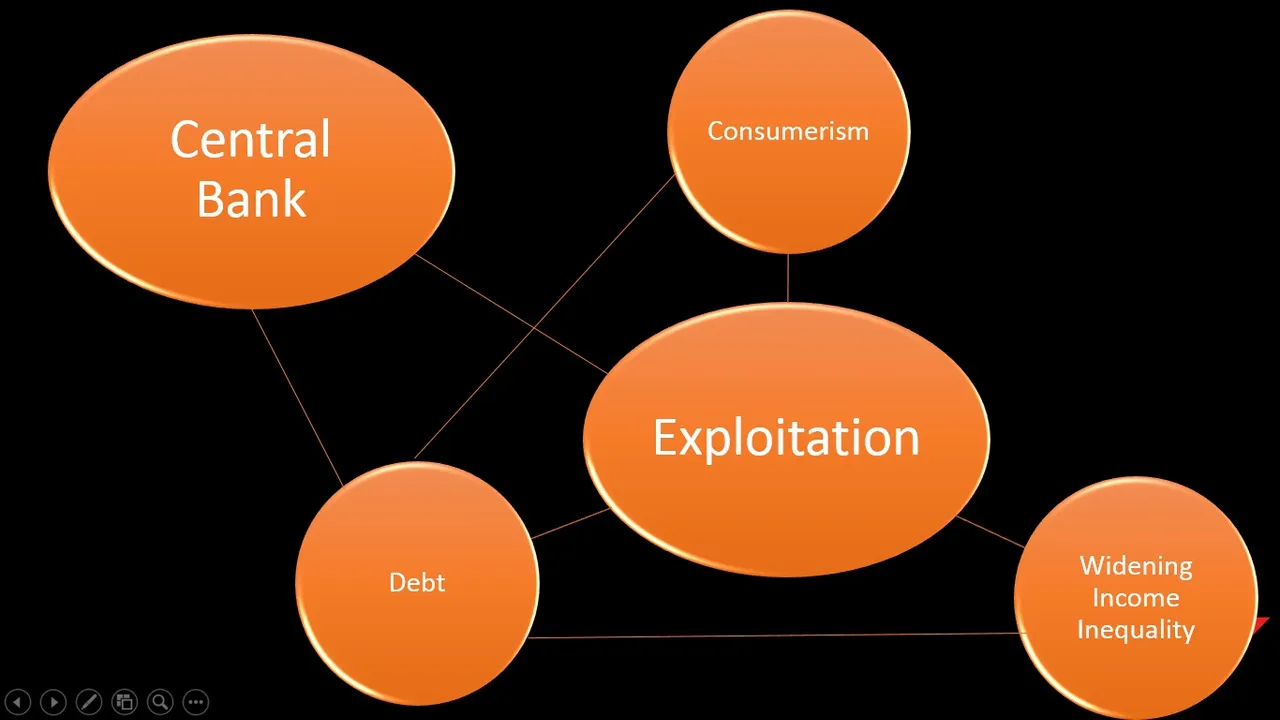
What can we do about it?
After investigating how the existing system operates and our discussion around issues that are not or rarely discussed, it is clear that democracy does not exist and probably should not exist on a national level. The existing system is a dictatorship disguised as a democracy or as I like to call it a ‘faux democracy’.
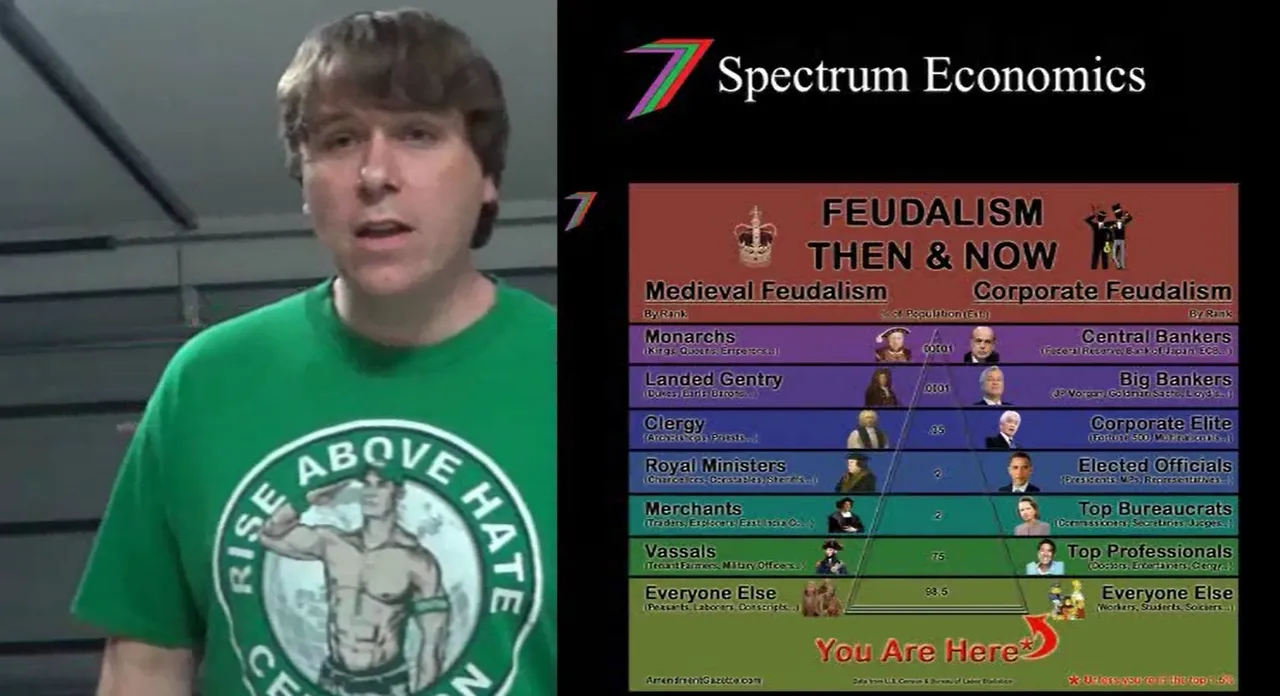
In Australia, this disguise is very bad as the Australian version of democracy has almost no elements of democracy whatsoever. Even if democracy was practiced as the ancient Greeks intended, it could not work on a large scale. There are too many problems that affect too few of the population for tools of democracy such as referendums to work effectively.
In the video a number of alternative solutions are proposed, they are as follows:
- Venus Project
- Anarchy
- Hybrid of a combination of ideas
All of the above might not be the answer. At least it is a start. It is important to come up with an alternative to this slave system that we are currently living in. David Icke often says that we should not be looking for solutions but we should be more focused on just simply removing the problems. It is quite difficult to imagine what we will be left with after all the key problems are removed. Most likely this new system will resemble a form of anarchy where we no longer have to submit to any form of ruling class or group.
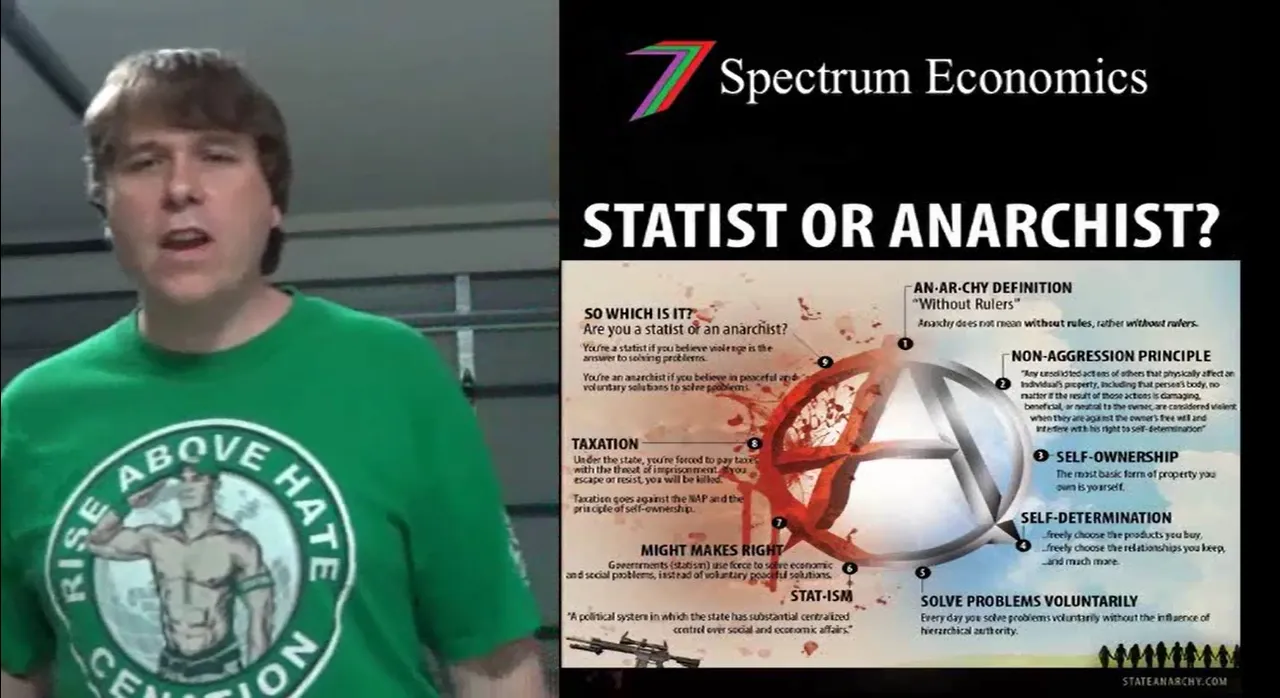
This brings me to the end of the four part series on ‘Economics and Democracy’. I hope you enjoyed it. Part four of the series can be watched in the link below.
Links to the first three parts to the video can also be found in the links below.
Below are the links to some interesting YouTube channels, which have numerous videos exposing the faux democracy that we live in.
HighImpactFlix: https://www.youtube.com/channel/UC7KZFVVnKjiCzkxWD-Qrakg
Anonymous Official: https://www.youtube.com/channel/UCA071Pllf2wk-B8Rkwt47bQ
David Icke: https://www.youtube.com/channel/UCAhmDfQ1LfOYECmNNWgXJ7Q
GlobalResearchTV: https://www.youtube.com/channel/UCvtTGZEcS8mbWdB7prg4QNw
Jesse Ventura: https://www.youtube.com/channel/UCjeYqGx0STkSM6iWknsDl3w
Plus many other channels and websites.
You can also access more of my content using the following links.
The official Spectrum Economics website can be accessed at: https://www.spectrumecons.com
Another video series that I have which looks at similar subject matter is my "The dark side of economics series', this is available at:
For more exciting videos go to my YouTube channel at https://www.youtube.com/channel/UCILwyLtjl7ZTlYOqFkAwLzw
You can find me on LinkedIn at: https://www.linkedin.com/in/waynedavies-spectrumecons/
You can find me on Facebook at: https://www.facebook.com/SpectrumEconomics/
You can find me on Steemit at: https://steemit.com/@spectrumecons
